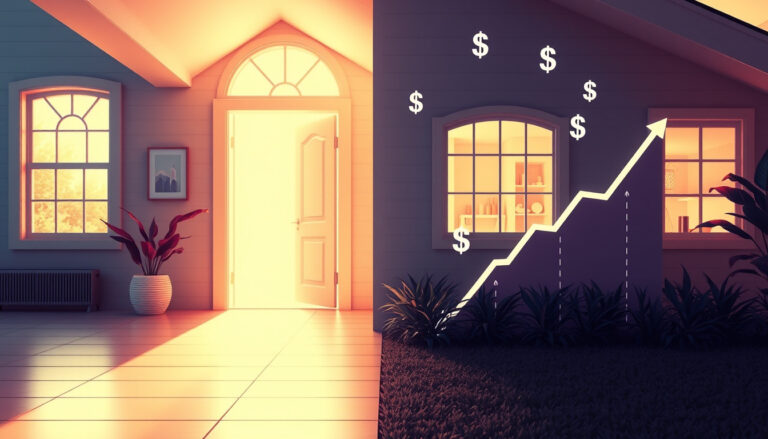When disaster strikes at home, quick action is critical.
Emergency repairs can mean the difference between a minor inconvenience and a major disaster.
Understanding the ins and outs of emergency repairs can save you time, money, and stress.
In this essential guide, we will explore the definition and importance of emergency repairs, discuss common types of emergencies you may face, provide safety tips for assessing risks, lay out a step-by-step guide to temporary fixes, advise when to call in professionals, and share preventative measures to avoid future emergencies.
Equip yourself with the knowledge needed to tackle these unexpected situations head-on!


Safety First: Assessing Risks Before Starting Repairs
Before you embark on any emergency repairs, especially in the context of real estate, it’s crucial to prioritize safety.
Assessing risks involves a careful evaluation of the situation—whether it’s a plumbing issue that could lead to water damage or electrical problems that pose serious hazards.
Begin by turning off utilities where necessary and using personal protective equipment to prevent injuries.
Additionally, consider consulting with a professional if the repairs exceed your skill level or if there are any potential dangers involved.
Remember, hasty decisions taken in moments of emergency can lead to more significant issues later on, so a thorough safety assessment is the key to successfully navigating repairs without escalating the problem.
Step-by-Step Guide to Temporary Fixes
When faced with unexpected damage in your home, knowing how to handle emergency repairs can save you time, money, and stress.
This step-by-step guide will equip you with the essentials needed to tackle minor issues until permanent solutions can be made.
First, assess the situation: identify the source and extent of the damage.
If it’s a leaky pipe, turn off the water supply to avoid further flooding.
Next, gather necessary tools such as wrenches, duct tape, or sealants based on the repair needed.
For leaks, applying duct tape around the affected area can be a temporary fix until a plumber can provide a more lasting remedy.
If electrical issues arise, ensuring safety is paramount—shut off the power supply, and use electrical tape to secure exposed wires.
For broken windows, boarding up the area with plywood can protect your home from weather and intruders.
Remember, these emergency repairs are just short-term measures; a professional assessment is crucial for effective long-term solutions.

When to Call a Professional: Knowing Your Limits
When it comes to home maintenance, knowing when to tackle emergency repairs yourself and when to call a professional can be crucial.
While DIY repairs can save you money and offer a sense of accomplishment, certain situations demand the expertise of a skilled technician.
For instance, if you encounter a major plumbing issue that involves sewage backup or severe water leaks, it’s essential to act quickly and contact a licensed plumber.
Similarly, electrical problems, such as flickering lights or power outages, can pose significant safety risks and should be handled by qualified electricians.
Understanding your limits is vital; if a repair is beyond your comfort level or could lead to further damage, don’t hesitate to reach out for professional assistance.
This not only ensures the job is done correctly but also prevents potential hazards that could arise from improper repairs.
Preventative Measures: Avoiding Future Emergencies
When it comes to maintaining your property, understanding the importance of preventative measures can significantly reduce the need for costly emergency repairs.
One of the most effective strategies is to conduct regular inspections of your home, focusing on key areas such as the roof, plumbing, and electrical systems.
By identifying potential issues before they escalate, you can save both time and money.
Additionally, creating a maintenance schedule that includes seasonal checks and routine maintenance tasks will ensure that your property remains in optimal condition.
Investing in quality materials and workmanship during any renovation or repair projects will also minimize the likelihood of future emergencies.
Ultimately, being proactive about your home’s upkeep not only enhances its value but also provides peace of mind, knowing that you are safeguarded against unforeseen issues.
Frequently Asked Questions
What are emergency repairs?
Emergency repairs refer to urgent fixes needed in a home or property to prevent further damage or hazards, such as plumbing leaks, electrical failures, or structural issues.
What are some common types of emergency repairs in homes?
Common emergency repairs include plumbing leaks, roof leaks, furnace breakdowns, electrical outages, and broken windows.
How do I assess safety risks before starting emergency repairs?
Before starting any repairs, evaluate the situation for potential hazards such as exposed wires, unstable structures, and harmful materials.
Always prioritize your safety and use personal protective equipment.
When should I call a professional for emergency repairs?
You should call a professional when the repair exceeds your skill level, involves complex systems like electrical or plumbing work, or poses safety risks you cannot manage.
What preventative measures can I take to avoid future emergencies?
Regular maintenance, such as inspecting roofs, cleaning gutters, checking for leaks, and performing routine home inspections, can help prevent emergency situations.





